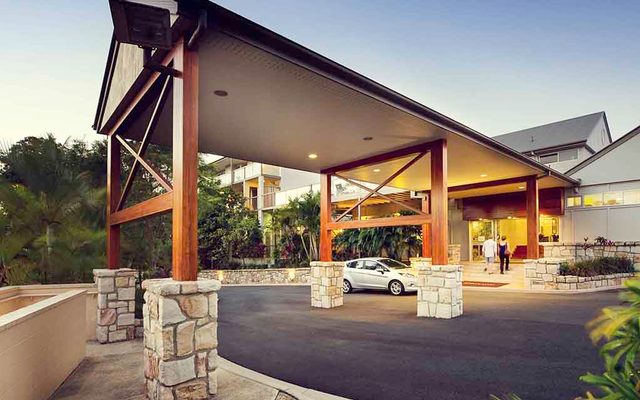This article is from the Australian Property Journal archive
Back in the days when externally managed LPTs were the norm, an LPT represented an income stream from a portfolio of properties. The value of those underlying properties was important.
In those days the Net Tangible Asset (NTA) backing of an LPT was something to which people paid attention. If an LPT was trading at a premium to NTA then investors wondered if that LPT was overvalued.
Investors saw LPTs that traded at a discount to NTA as an indication that an LPT may be a bargain, given that it may have been possible, valuation lag withstanding, to realise the portfolio for more than the aggregate value of the securities.
In recent times there was one LPT that traded at a significant discount to NTA and that proved in the long run to be a bargain. That LPT was Grand Hotel Group (ASX: GHG). In mid 2004 the unit price of GHG was at a deep discount to NTA. Part of the reason was that the hotels it owned were not performing particularly well and it is possible that the NTA was overstating the asset backing of the portfolio.
Babcock & Brown took a large stake in GHG pushing the unit price up from $0.46 (March, 2003) to $0.65 (December 2003). As at December 2003 the reported NTA was $0.88 per unit.
For a long while afterwards the unit price languished however proving that there are lies, damned lies and statistics. GHG was a top performer in terms of total returns as the percentage move in the unit price was included in the total returns. It wasn’t until late 2006 at the time of the privatisation bid that the true value of the assets was realised. During the interim, the hotel industry improved, the value of the properties increased accordingly and the reported NTA was at a discount to the true underlying NTA.
NTA comprises either the purchase price (taken to represent market value) or valuation. In times of fast moving property prices or plummeting yields, such as we have been experiencing for about three years (and continue to experience) the reported NTA of LPT owned properties (based on purchase price or valuation) is generally out of date within a matter of months.
A valuation is based on past sales evidence and in a moving market is really only reflective of the value a rational market participant would have been prepared to pay at the valuation date. Many an LPT has reported huge gains on properties that are sold considerably higher than a relatively recent valuation. Don’t blame the valuer, it is just that they must rely on solid evidence that can only be gleaned from past sales, rather than the intent of prospective purchasers, particularly those with a special interest – after all a statement of intent is not actionable in court but reliance on it by a valuer is!
Another factor is valuation frequency. In days gone by, an LPT had properties valued every 3 years.
Imagine the discrepancy in book value on a regional shopping centre today if it had last been valued in early 2004 (using late 2003 sales evidence). Valuations are now effectively annual (making valuers akin to hen’s teeth!).
Even still in a rapidly moving market the difference in book value and current market value over 12-18 months can be significant. Take the Ernst & Young tower in Sydney for example. When Allco bought half of the tower in 2005 on a yield of 6.75% the market considered that to be one hell of a tight yield.
In 2006, Multiplex put the other half of that tower into a listed vehicle at a yield of 6.15% which, based on the sub 6% Record Realty paid for the ASX headquarters, looked a more than fair price.
As an example, if a property was valued on a yield of 7.5% two years ago and is now a yield of 6.5%, that property is now undervalued on the books for NTA purposes by 15%. Now consider that the income has increased by 4% each of those two years; then the true value of that building is understated by a whopping 25% over just two years!
Now let’s look at the returns required by investors. An LPT may well have a clutch of properties with an average yield of 8%. However this is a stable income stream which tends to grow steadily (due to rent review clauses) so investors treat it as a growth annuity. Their nearest fixed interest investment offers 6% and no growth, so to them this is an inflation indexed bond so they are happy to bid down the 8% yield to get 6.5% indexed to inflation which means that these investors will bid the price up to a premium to NTA. Remember that the security price of an LPT unit is determined by the demand and supply for those units not the NTA.
That leads us into another interesting phenomenon; the weight of money. There is a huge amount of superannuation money that needs to be invested in a diversified investment strategy. LPTs are considered property investments so the balanced fund manager or superannuation fund following the investment strategy set down by those actuarially trained asset consultants needs to get set in LPTs regardless of the price/value. Therefore, this is also driving up the price of LPTs with little regard for NTAor real value.
The problems with NTAs as described above apply to both externally managed LPTs and the property trust component of internally managed/stapled LPTs. So, why is a stapled LPT’s NTA not relevant to the majority of stapled LPTs? Stapled LPT’s by definition have more than one component to them – normally a property trust plus a business component.
We have already covered the reasons why the property trust component NTA may not be relevant – now let us look at the business component. The average yield on LPTs is currently 5.5%; that is the value of the income stream’s 5.5% yield is an equivalent P/E multiple of 18 times earnings (8% yield is a PE of 12.5 and 7% yield is a PE of 14.3).
Let’s assume that a stapled LPT has a retail portfolio that should have an average yield of 7%. However 25% of its income comes from funds management. Funds managers generally trade on a P/E of between 20-30 times earnings. Now let us assume that this LPT has embedded cross ownership and it will in all reality never lose that management income. Its P/E should be 25 times or more. If out of every $100 of income, 14.3 is the multiple applied to the property income and 25 is the P/E applied to the funds management income, then by rights that LPT should be valued on a P/E multiple of nearly 16; which is an 12% premium to a P/E of 14.3 (or a yield of 7%). If that funds management arm is growing at say 30% per annum, then that stapled LPT should be valued even higher.
In short the real value of the stapled LPTs often bears little relation to the value of its properties. Given that Stapled LPTs comprise approximately 79% by market cap of the S&P/ASX 300 Property Trust index, the Index’s current average price premium to NTA of 90.5% is largely irrelevant.
So in summary, in these days of contracting yields on properties, reported NTA has trouble reflecting the true value of the underlying assets for a number of fundamental reasons. This is true for both stapled and externally managed LPTs but more relevant to the externally managed LPTs. As for the stapled LPTs their business component has value that is intangible so the need for them to focus on NTA is Not True Anymore.
By John Welch, head of research with Property Investment Research.



